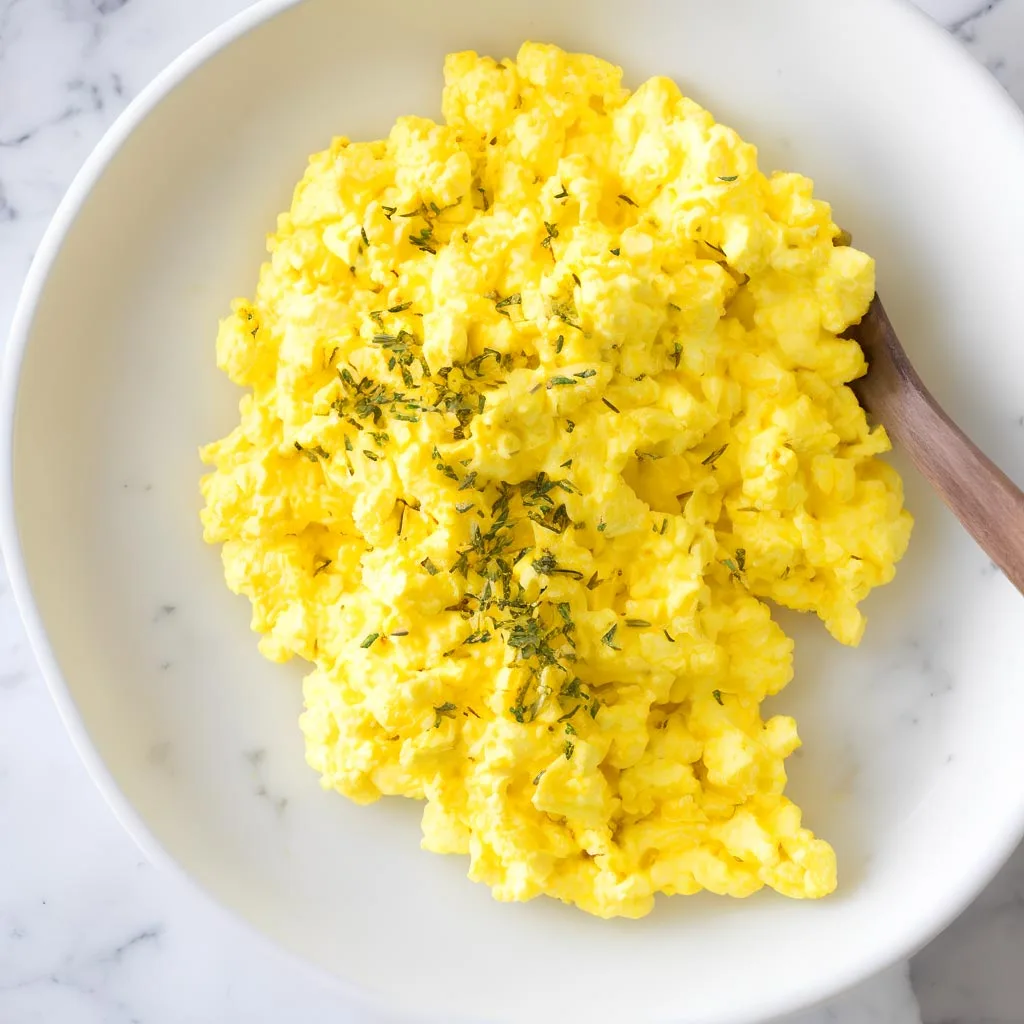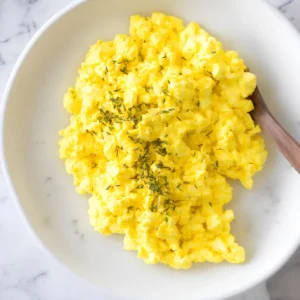
Scrambled eggs, a breakfast classic loved by many, is a dish that’s both simple and versatile. Originating from ancient times, eggs have been a staple in various cuisines across the globe.
This recipe, although seemingly straightforward, offers a delightful combination of flavors and textures that make it a beloved choice for breakfast or brunch.
Scrambled eggs are not only delicious but also customizable. You can personalize this recipe by adding various ingredients such as cheese, herbs, or vegetables to create your own unique twist.
Experiment with different flavor combinations to discover your perfect breakfast creation. So, rise and shine to the delightful aroma of freshly cooked scrambled eggs, ready to brighten your morning routine.
Expert Tip: Use a non-stick frying pan to prevent the eggs from sticking during cooking.
Eggs: The main ingredient in scrambled eggs, providing a rich source of protein essential for starting your day. Eggs contribute to the creamy texture and savory flavor of the dish.
Milk: Adding milk to the eggs enhances their creaminess, resulting in soft and fluffy scrambled eggs. It helps create a smooth texture and adds a subtle richness to the dish.
Salt and Black Pepper: These seasonings are crucial for enhancing the flavor profile of scrambled eggs. Salt adds depth and brings out the natural taste of the eggs, while black pepper provides a subtle kick of heat and complexity.
Butter (Unsalted): Butter adds richness and helps prevent the eggs from sticking to the pan during cooking. It also contributes to the overall flavor of the dish, giving it a deliciously indulgent taste.
Expert Tip: Keep the heat on medium to avoid overcooking the eggs and maintain their creamy texture.
Expert Tip: Whisk the eggs and milk together until well combined for a uniform texture.
Scrambled eggs should be fully set but still moist. Avoid overcooking them, as they can become dry and rubbery.
Yes, you can omit the milk if desired. However, milk helps create a creamier texture in the eggs.
Yes, you can use salted butter, but be mindful of the additional salt content it adds to the dish.
While scrambled eggs are best enjoyed fresh, you can make them ahead of time and reheat them gently before serving. However, the texture may change slightly upon reheating.
Yes, feel free to customize your scrambled eggs by adding ingredients such as cheese, herbs, vegetables, or cooked meats for added flavor and variety.
Here are some more recipes for you to enjoy! If you my recipes don’t forget to rate and leave a comment.
If you have any recipe suggestions, please do not hesitate to ask me. A great way to stay in contact with me is through Instagram, Facebook, Twitter and YouTube. Don’t forget to tag me @CookwithNabeela in your recipe photos!

Subscribe now to receive my latest recipes directly in your inbox. Stay up-to-date and never miss out!

I love to cook! I want to share with you my favourite, delicious family-friendly recipes. I want to inspire you to create fantastic food for your family every day.
Add your first comment to this post